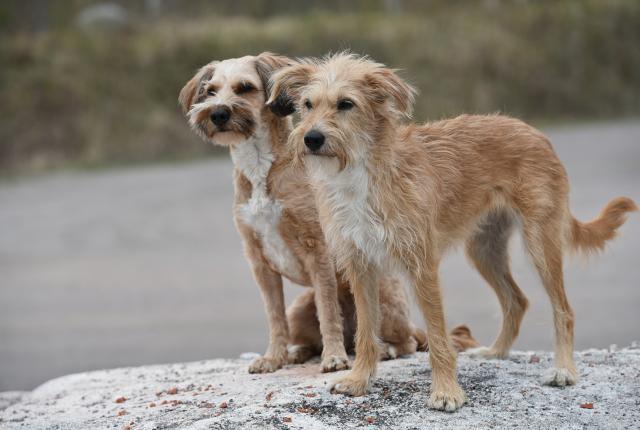Frequently asked questions


No. The first generation (F1) is the offspring of two dogs from different breeds. After this, the combinations will be with the original breed, and over the generations it will be possible to talk about a purebred individual again.
During a cross breeding project, the aim is always to cherish and preserve the good characteristics of the original breed and to eliminate health and character problems, for example. Another purpose may be to restore the appearance and hair to correspond the original breed standards as much as possible while taking the dogs well-being into account. The objective is to turn extreme characteristics in a healthier direction.
No. Cross breeding is only used as a last resort when the breed already has health issues or low genetic diversity and traditional methods of breeding are no longer helpful.
Most dog breeds do not have the kinds of problems that would require cross breeding.
Appearance is never the reason or goal for cross breeding, but it can, of course, change for a while in the crossbred offspring. With some breeds, a change in appearance is one of the goals, especially, if the original appearance is likely to cause issues in the breed’s well-being.
However, it has been shown that changing appearance during breeding is one of the easiest traits to change. Already two or three generations later the appearance can be restored to the likeness of the original breed if so desired.
Crossbred puppies are always registered as the original breed, and after the first instance of cross breeding the next breeding will be with the original breed.
For the first three generations, the crossbred litters are registered in the Finnish Kennel Club’s cross breeding register, which is outside the International Canine Federation FCI. Dogs that are registered in the cross breeding register can participate in national competitions and shows, but they cannot compete for international titles.
From the fifth generation, the crossbred dogs can be registered in the Finnish Kennel Club’s normal breeding register (FI). The pedigrees of the crossbred dogs can be seen in the Finnish Kennel Club’s breeding database.
Many breeds used to have open breeding books or pedigree. They allowed introducing unregistered individuals, from the so-called landrace, into the breed, which in its part preserved adequate genetic diversity within the breed.
Today, almost all breeding books are closed, which may have difficult consequences on breeds that are small in number.
In Finland, a few dog breeds, such as the Finnish Lapponian Dog and the Lapponian Herder, have open breeding books. With certain conditions, dogs whose parents are not registered pedigree dogs can be accepted into these breeds. This increases the breed’s diversity. Dogs that are introduced into the breed are first registered in a special register (ER) and, from the fourth generation on, in the normal breeding register (FI).
Cross breeding requires international cooperation. Finland is a good example as it tries to be a pioneer in the field. All cross breeding projects in Finland have been both practical and scientific.
Other Nordic Kennel Clubs also see systematic cross breeding programmes in a very positive light. Cross breeding projects have succeeded in saving breeds and, currently, there are many different ongoing cross breeding projects.
However, many European Kennel Clubs defend more traditional opinions on keeping breeds completely pure, and understanding the opportunities of cross breeding has not yet filtered through to everyone.
Yes. Until now, cross breeding projects have mainly had positive results for the breeds, but no one can predict which cross breeding projects will work.
It is always possible that one breed will acquire new diseases or unwanted traits from another breed. For this reason, cross breeding projects are well-planned, closely followed and discontinued if the project seems to do more harm than good for a breed.
Further information on cross breeding:
Cross breeding offers help in dog breeding video (in Finnish)
Breed bans are not the best way to go when improving the health and well-being of dogs